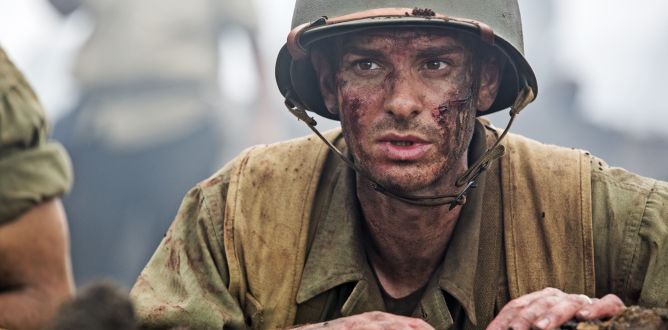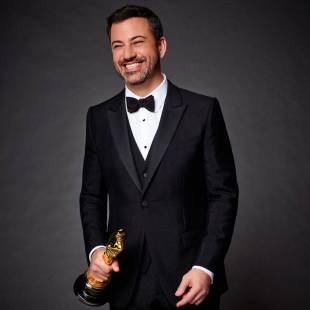Hacksaw Ridge Parent Guide
This production presents an ironic contrast of an account about a man adhering to pacifist ideals, set within one of film’s bloodiest depictions of war.
Parent Movie Review
Desmond T. Doss, portrayed here by Andrew Garfield, was a US Army medic during World War II. He not only served in the Battle of Okinawa where US soldiers were trying to take Hacksaw Ridge, but was also credited with saving the lives of 75 injured soldiers, pulling them one by one from the scorched battlefield. Even more amazingly, Doss survived! Now the punchline: He did all of this without ever arming himself. A faithful Seventh Day Adventist, Doss enlisted as a conscientious objector. He was determined to serve his country—he just didn’t want to carry a gun.
The telling of this remarkable story begins with Doss’s childhood, where we learn that as a young boy (played by Darcy Bryce) he, his brother (Roman Guerriero) and mother (Rachel Griffiths) were subjected to his alcoholic father’s (Huge Weaving) physical and verbal abuse. Growing up Doss’s father constantly demands his sons behave like real men. This advice clashes with his mother’s soft, religious teachings that include a strong commitment to the Ten Commandments. (Especially the sixth one which states: “thou shalt not kill”.) When the war breaks out Doss is torn between his moral obligation to God and his fellow countrymen. His solution is to join the army with the goal of saving lives, rather than taking them. This compromise is met with scorn, bullying and even physical assault from commanders and comrades alike.
Before Doss even gets to the front, he is already facing his first war. Accused of disobedience after refusing a commander’s order to hold a gun during basic training, Doss is thrown into military jail. Only after an unlikely person intercedes with his court-martial hearing is Doss allowed to enter the conflict without a weapon.
Parents thinking this inspirational bio-drama may be a fine pick to share with their teens will want to approach this R-rated film with extreme caution. Director Mel Gibson has demonstrated in the past that he feels the need of extreme, explicit violence in order to create an accurate portrayal. In The Passion of the Christ for instance, every nail of the crucifixion pounded with pain. In Hacksaw Ridge, every bullet blasts with blood and gore. Even in an early “cute” scene, depicting Doss donating blood so he can spend time with a beautiful nurse (Teresa Palmer), the insertion of the needle is done with unnecessary gush and squish effects. And by the time we are in the midst of battle, blood is secondary to buckets of body parts strewn across a decimated landscape and the rapid succession of shell fire exploding human beings.
The end result is the ironic contrast of an account about a man adhering to his pacifist ideals, set within one of film’s bloodiest depictions of war. It could be argued that other war movies have been every bit as gratuitous for far less noble causes, but has Gibson done a disservice by upping the visuals to a level that may turn many away from seeing this compelling story? Considering the type of violent action we often view in PG-13 films, I’m certain this screenplay could have been every bit as relevant kept within that scope. (Sadly this script was originally of interest to Walden Media, but their insistence on creating a PG-13 version was rejected by Bill Mechanic, one of a flotilla of producers involved in financing this project.)
Desmond T. Doss became the first Conscientious Objector in US history to be awarded the Medal of Honor, and when the credits roll we are more than convinced he deserved this distinction. However, by that time my emotions have been so desensitized by close to an hour of combat mayhem, I feel like I’m missing out on the emotional payoff I should be feeling as we see this young man’s gaunt and exhausted frame being carried back to camp. In this case, the impact of the bullets hinders the impact of message.
Directed by Mel Gibson. Starring Andrew Garfield, Sam Worthington, Luke Bracey, Teresa Palmer, Hugo Weaving.. Running time: 131 minutes. Theatrical release November 4, 2016. Updated July 17, 2017
Hacksaw Ridge
Rating & Content Info
Why is Hacksaw Ridge rated R? Hacksaw Ridge is rated R by the MPAA for intense prolonged realistically graphic sequences of war violence including grisly bloody images.
Violence: Nearly half the running time of this movie contains explicitly detailed violence in a war context. Soldiers are seen in battle being shot, blown up and immolated (burned to death by flame throwing weapons). These brutal incidents are depicted with copious blood and tissue effects. Injured victims are depicted with various limbs missing and detailed body damage. Corpses are depicted in various states of decay with vermin crawling within and over them. Japanese soldiers are shown taking their own lives, including a man who stabs himself with a knife and is immediately decapitated by another Japanese soldier. Outside of the battle scenes, other violence includes an abusive husband who verbally and physically threatens his wife and children, at one point we see him holding a gun to her head and there is a physical struggle. Two young boys fistfight and brawl, the fight ends after one hits the other over the head with a brick, a large bloody injury is seen. A solider is physically assaulted and bullied by other soldiers and his commanding officers after he refuses to carry a weapon, even though he enlisted with that understanding. Surgical scenes are depicted. A character’s arm is punctured with a needle during a blood donation.
Sexual Content: A man and woman kiss on various occasions. A married couple is briefly seen, each in their underwear, they begin to hug and kiss.
Profanity: Mild profanities and scatological terms are intermittently heard throughout. Men make crude comments about women and the possibility of contracting an STD during leave. Ethnic slurs are used.
Alcohol / Drug Use: A man’s alcoholism leads to domestic violence, we see him drinking in a couple of scenes. Tobacco use is portrayed. A character takes a drink prior to taking his life.
Page last updated July 17, 2017
Hacksaw Ridge Parents' Guide
Where would you draw the line between depicting the “realities” of war versus having a story that is accessible to a larger audience?
Many movies portray sanitized violence in which people are shot or stabbed without blood effects. How might this condition us to assume that violence isn’t serious? Does the sight of blood and explicit tissue damage make you think about violence in a different way?
News About "Hacksaw Ridge"
Learn more about the real Desmond T. Doss and the battle over Hacksaw Ridge. Find out about the Seventh Day Adventist religion. Here is the definition of a Conscientious Objector. Read about the USA’s Medal of Honor.
Home Video
The most recent home video release of Hacksaw Ridge movie is February 21, 2017. Here are some details…
Home Video Notes: Hacksaw Ridge
Release Date: 21 February 2017
Hacksaw Ridge releases to home video (Blu-ray/DVD/Digital Copy) with the following bonus features:
- The Soul of War: Making Hacksaw Ridge Documentary
- Veterans Day Greeting with Mel Gibson
- Deleted Scenes
Related home video titles:
Other memorable moments from WWII’s battle in the Pacific have been put to film. See: Tora! Tora! Tora!, Emperor, and Unbroken.



